#grave goods
Text

Roman ring with engraved Carnelian gem depicting a youth and his dog, dated to the 3rd-2nd century BC
1K notes
·
View notes
Text



Prehistoric Jet Necklace From A Burial, Mount Stuart, The National Museum of Scotland, Edinburgh
#ice age#stone age#bronze age#copper age#iron age#neolithic#mesolithic#calcholithic#paleolithic#prehistoric#prehistory#grave goods#jet necklace#ritual#ancient living#ancient craft#ancient cultures#archaeology
239 notes
·
View notes
Text
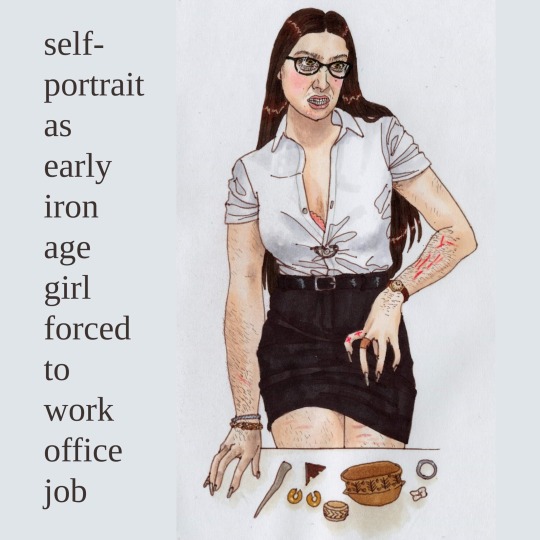
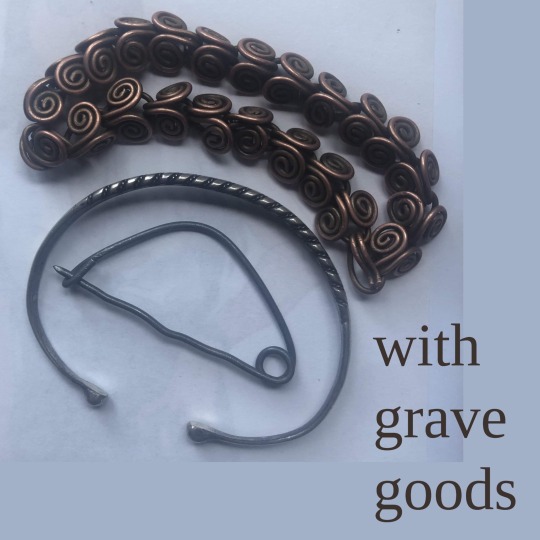

self-portrait as early iron age girl forced to work office job (2024)
#allow me to put the year there like that because this feels somehow like a landmark piece of art for me#i made the fibula also#okay to rb#also disclaimer i like. adore my job. it still makes me feel like this#ulrikart#art#self portrait#iron age#office tag#grave goods#self harm tw#sh tw
130 notes
·
View notes
Photo

A collection of wealthy grave goods including a sword, seax, shield boss, bronze cooking ware, a horse’s bit, and an assortment of strap fittings, excavated in Giengen, Germany, made ca. AD 640-660, housed at the Landesmuseum Württemberg.
#weapons#sword#dagger#shield#seax#europe#european#germany#german#viking era#landesmuseum wurttemberg#art#history#grave goods
923 notes
·
View notes
Text

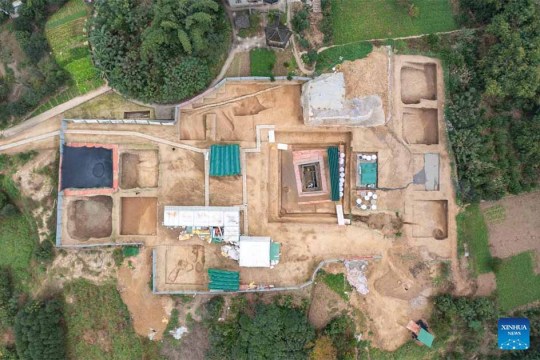
A Rare Western Han Dynasty Tomb Found in Southwest China
A well-preserved tomb, dating back to the Western Han Dynasty (202 BC-25 AD), with a clear recorded year has been discovered in Wulong District of southwest China's Chongqing Municipality, the Chongqing Cultural Relics and Archaeology Research Institute said Tuesday.
This archaeological project is a rescue excavation and protection work carried out to forge cooperation with the Baima project, the last of a cascade of hydropower stations on the section of the Wujiang River in Chongqing.
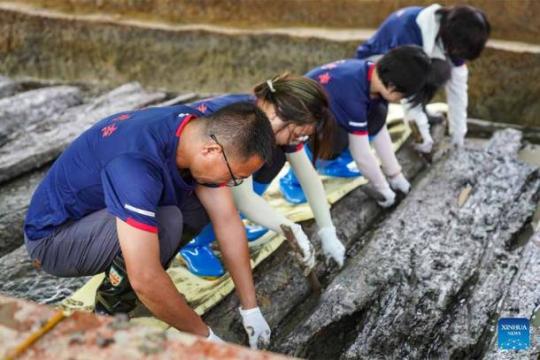

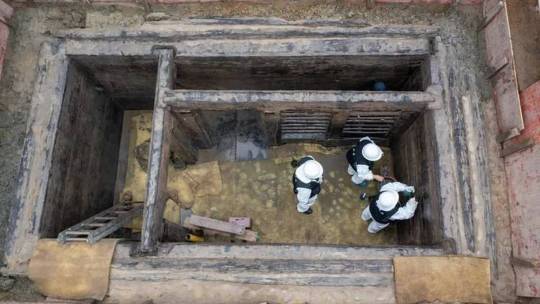

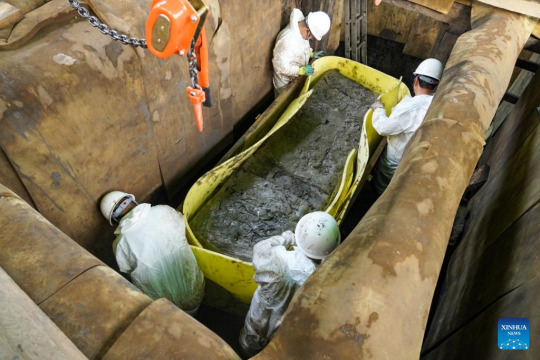

With the approval of the National Cultural Heritage Administration, the Chongqing Cultural Relics and Archaeology Research Institute set up a work team of more than 20 people from different archaeology research institutes and universities to excavate the site in March this year.
According to Huang Wei, the leader of the archaeological project, a collection of tombs dating from the Han Dynasty (202 BC-220 AD) to the Six Dynasties period (222-589) were newly discovered as part of this project. Among them, the tomb dating back to the Western Han Dynasty was the most important, and more than 600 precious cultural relics such as lacquerware, wood ware, bamboo ware, pottery and bronze ware were unearthed from the tomb.

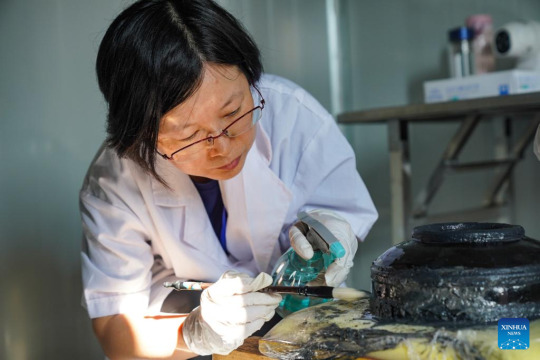
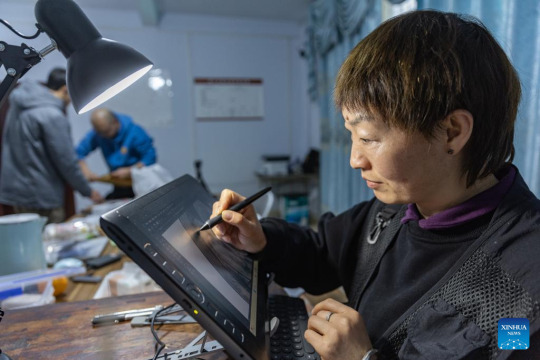
Due to the tomb being filled with water throughout the year, it remains undisturbed and unharmed, and the funerary objects in the tomb are well preserved.
"What is exciting about this discovery is not just the large number of unearthed artifacts but also the list of burial items containing a precise year record, which has been verified as 193 BC, providing clarity on the tomb's burial timeframe. An unearthed jade ware from the tomb shows the prominent position of the tomb owner," Huang said.
The list of burial items found in the tomb is complete and clearly records the name, quantity and size of the funerary objects.
The tomb discovered this time is the one containing the largest quantity of lacquered wood and bamboo wares ever found at one time in the upper reaches of the Yangtze River in China, said Bai Jiujiang, head of the Chongqing Cultural Relics and Archaeology Research Institute.

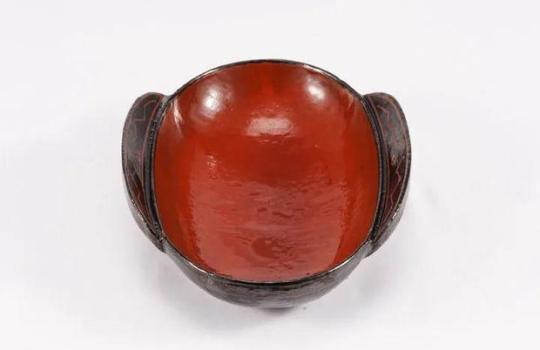

Based on publicly available information, it is also the earliest tomb of the Western Han Dynasty found in China, with a clear recorded year, according to Bai.
This is a major archaeological discovery regarding the Qin and Han Dynasties in the Wujiang River Basin, offering physical evidence and important basic research materials for future study of burial customs and the comparative analysis of famous artifacts from the early Western Han Dynasty, according to the archaeologists.
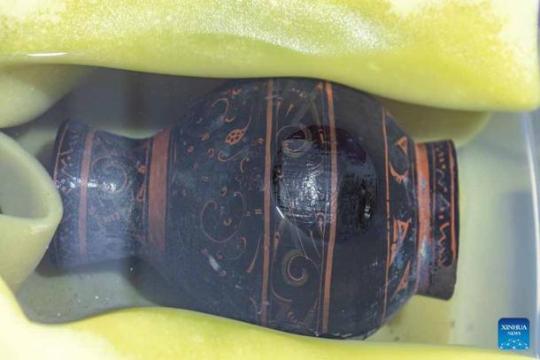

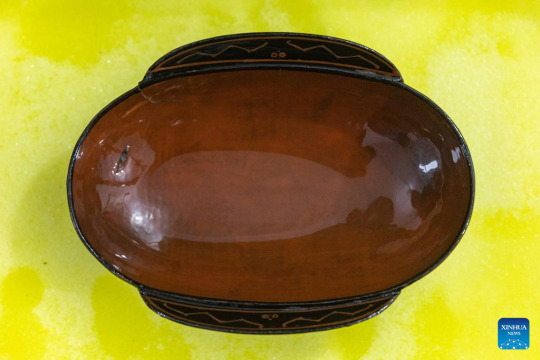

#A Rare Western Han Dynasty Tomb Found in Southwest China#Tomb Holding Hundreds of Ancient Relics Unearthed in China#Western Han Dynasty#ancient tomb#ancient grave#grave goods#ancient artifacts#archeology#archeolgst#history#history news#ancient history#ancient culture#ancient civilizations#ancient china#chinese history#chinese art
62 notes
·
View notes
Text
The discovery of the perfectly preserved grave of a 3,000-year-old charioteer in Siberia is a historic revelation, showing that the revolutionary war machine was used in the area far earlier than previously thought!
106 notes
·
View notes
Note
Sad and slightly goofy but very sincere query: my cat has been suddenly diagnosed with an aggressive cancer, and I'm busying myself with gathering her grave findings in her final days now, sort of getting her sniff of approval for the items. She likes the basket casket quite a bit. Any recs for stuff I can add to her shroud that will make her future archaeologist cry real good?
Aw I am so sorry to hear that. Every time I have lost a kitty, I obtained a little kitty figurine made of stone, but I display those in my room. I know a lot of rock shops sell stones in various shapes. maybe kitty or heart shaped ones? And unless you can’t bear to part with it, if she has a collar tag with her name on it, you could include that, or have a special one made for her, with her name, your name, and dates on it. Please give kitty a gentle pat from me. ❤️
43 notes
·
View notes
Text
The 5,000-year-old burial site was until excavations earlier this year burial site in San Giorgio Bigarello, Italy
4 notes
·
View notes
Photo

Imperial tomb robe, 1736-95, China.
48 notes
·
View notes
Text

Oldest evidence of writing on the Italian peninsula
Gabii, necropolis of Osteria dell'Osa, woman's tomb, c. first half of the 8th century BCE
The interpretation of this text is uncertain. Using the Greek alphabet and moving from left to right, it could read ΕΥΛΙΝ (the one who spins well), ΕΥΝΙΝ (bed, tomb), or, less likely, ΕΥΟΙΝ (Bacchic cheer). Reading from right to left using the early Latin alphabet, one can read "ni lue" (do not steal).
On display in thr epigraphic exhibit of the Baths of Diocletian (Rome, Italy)
#isaac.jpg#art#archaeology#classical archaeology#roman#epigraphy#latin#terme di dioclezione#ceramics#ceramika#grave goods
114 notes
·
View notes
Text






Autumn color in the cemetery
Pumpkins and candles
Schlitz
We Were Here to Leave a Better World
Glass beads
Pumpkins and dolls at a little girl's grave
(October 11, 2023 // Blossomburg Cemetery // Peninsula State Park // Door County, WI)
#jessie lynn mcmains#photography#cemetery#grave goods#autumn color#door county#wisconsin#peninsula state park#blossomburg cemetery#my photos#vacation#history
4 notes
·
View notes
Text
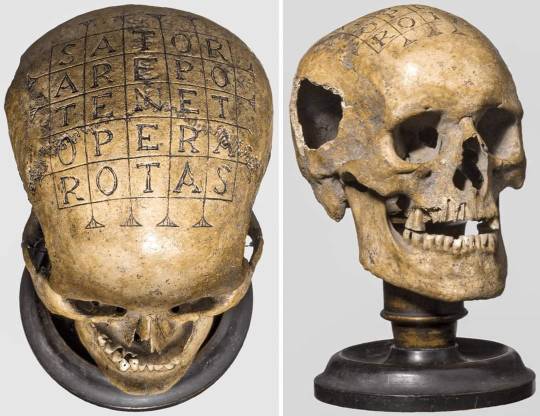
A 16th century German 'oath skull' (a human skull on which defendants swore their oath in Vehmic courts) engraved with the 'magical' Roman 'Sator square.'
739 notes
·
View notes
Text
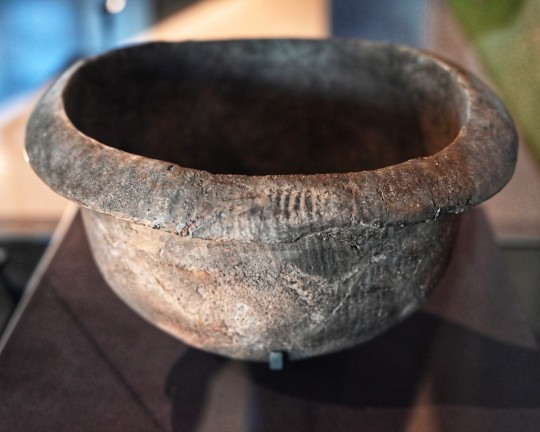




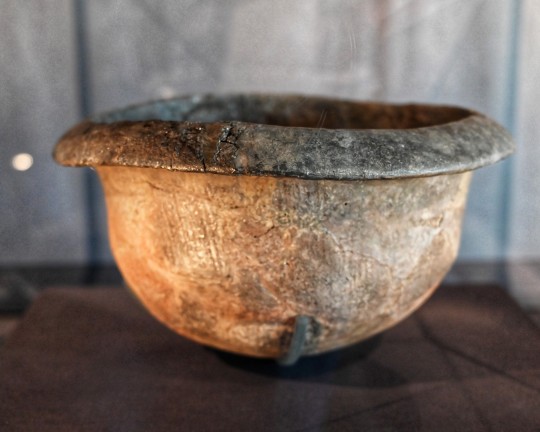
Prehistoric Food Vessel from Nether Largie South Chambered Cairn, 5000 years old, Kilmartin Museum, Kilmartin Glen, Argyll, Scotland
#ice age#stone age#bronze age#copper age#iron age#neolithic#mesolithic#calcholithic#paleolithic#prehistoric#prehistory#chambered cairn#cairn#grave goods#ritual#archaeology#vessel#pottery#prehistoric pottery#relic#kilmartin glen#nether largie south cairn
195 notes
·
View notes
Text

Trefoil brooch
Viking age trefoil brooch(C6743) with a big round hole at top of one of its arms.
Found in Lom, Norway, in a grave hill that had been much disturbed. The objects retrieved from the grave showed signs of having been in a fire.
Doesn't seem to have been found with its needle in the back. It might have been of a different material and rusted away or perhaps the brooch was used as a pendant for a time.
C6743 brooch is stored at kulturhistorisk museum in Oslo.
#viking age#viking#trefoil brooch#brooch#trefoil#trefliket spenne#norse#ancient civilizations#illustration#medieval#archeology#iron age#triquetra#artifacts#grave goods#grave find#archaeology#grimmborg#details
35 notes
·
View notes
Text
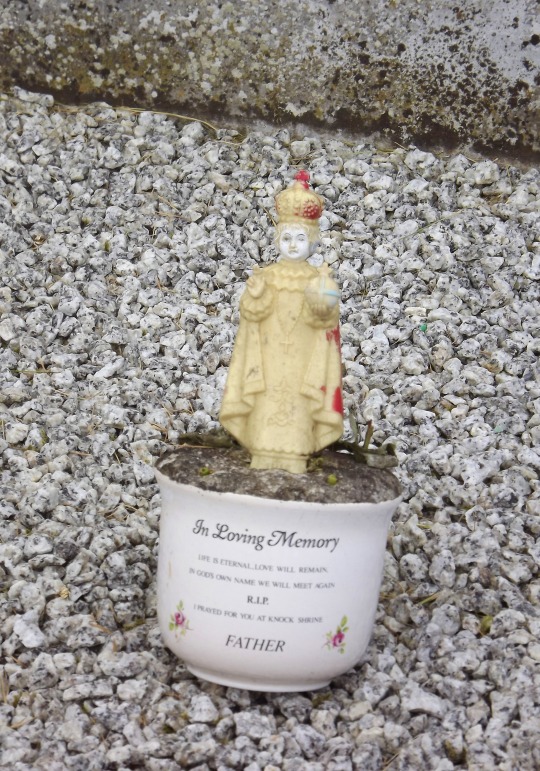
"In Loving Memory," grave offering, Kilmacduagh, County Galway, 2013.
Happy All Souls Day!
7 notes
·
View notes
Text
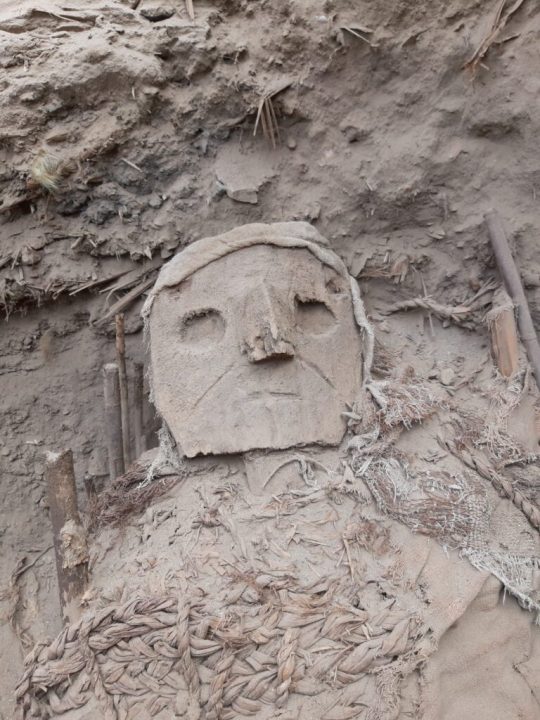

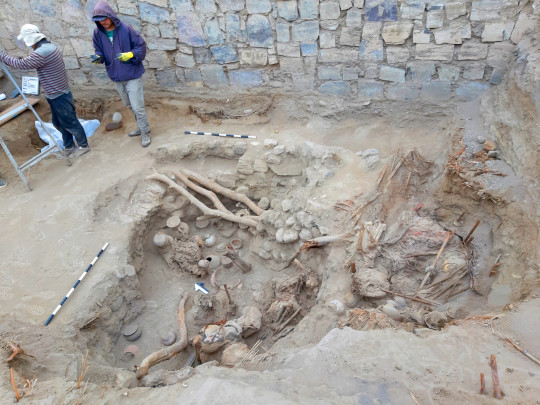

Archaeologists Find 73 Wari Mummy Bundles in Peru
A team of archaeologists from the PUCP Archaeology Program “Valley of Pachacámac” have uncovered over 70 intact burial bundles with carved masks.
The discovery was made at Pachacámac, an archaeological site in the Valley of the Lurín River, located southeast of Lima, Peru. Pachacámac (named after Pacha Kamaq – the “Earth Maker” creator god) was first settled around AD 200 by the Wari, a Middle Horizon civilisation.
Pachacámac mainly consists of pyramids, plazas, cemeteries, and a series of ramps, centred on a sacred zone containing the Painted Temple, the Temple of the Sun, and the Old Temple of Pachacamac.
Recent excavation results announced on the Archeowieści blog, which is managed by the Faculty of Archaeology of the University of Warsaw, have uncovered over 70 intact burial bundles dating from the second half of the Middle Horizon (AD 800–1100).
The burial bundles were found either deposited individually or in group clusters at the foot of the Painted Temple, some of which are wearing “false head” masks made of carved wood and ceramics, a common burial practice of the Wari culture.

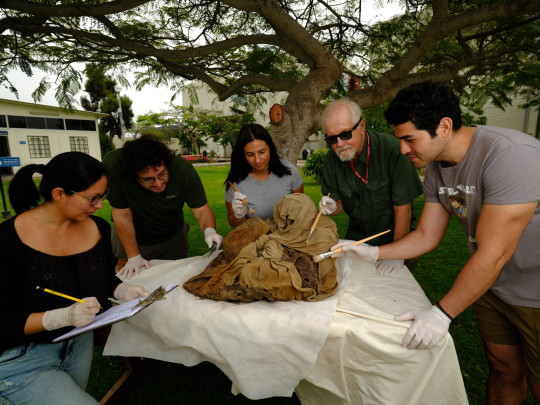
Professor Makowski, said: “In the pre-Hispanic Andes, no-one died; everyone was predestined to continue living in the parallel world of their ancestors.”
Excavations also discovered wooden staffs with images of Wari elite wearing Tiwanaku-type headgear. They were located in a votive deposit covered with a layer of oyster shell fragments imported from Ecuador.


The Wari worshipped the Staff god, the chief creator god, which is often found in both portable and fixed art using different media such as stone, textile, and ceramics. Some scholars believe that some variations of the Staff God are possible depictions of Viracocha or Thunupa, and are the forerunner of the Inca principal gods – the Sun, Moon, and Thunder.
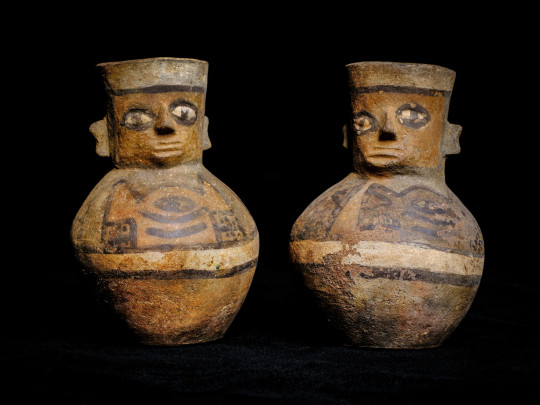

#Archaeologists Find 73 Wari Mummy Bundles in Peru#Pachacámac#ancient graves#ancient tombs#grave goods#ancient artifacts#archeology#archeolgst#history#history news#ancient history#ancient culture#ancient civilizations#wari
59 notes
·
View notes